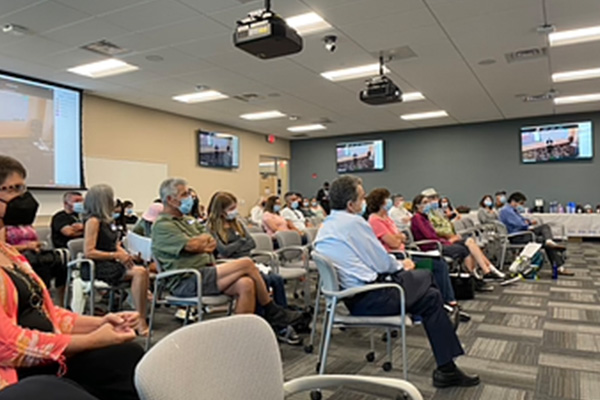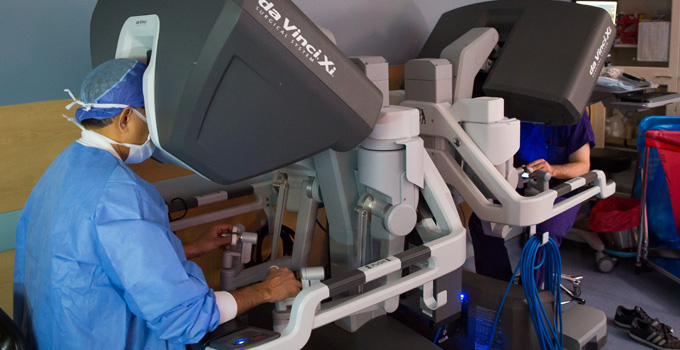About 400years ago, Cristobal Baca and Ana Maria Pacheco Ortiz set roots in what would become New Mexico. Unwittingly, they carried a genetic mutation that would position our state as the global epicenter for familial cerebral cavernous malformation (FCCM)—a devastating condition that is lesser known around the world but as common in New Mexico as migraine headaches.
The most common type of FCCM in New Mexico is CCM1, which is caused by a mutation of the KRIT1 gene. Most often found in Hispanic-American families descended from the Baca family, about half of FCCM cases are caused by this gene variant, which is called the Common Hispanic Mutation. The Mexican states of Chihuahua and Sonora, where some members of the family settled, are also affected by CCM1 but to a lesser degree than New Mexico.
CCM1 involves a bundle of small, irregular blood vessels that develop into lesions—enlarged vessels between 1/4” and 4” that become thin, stiff and likely to leak blood, causing a hemorrhage in the brain or spinal cord around the lesion. Left unmanaged, it can cause seizures, severe headaches and hemorrhagic strokes that can lead to neurological deficits, permanent disability and death.
When a parent carries the genetic mutation for CCM1, there is a 50% chance it will be inherited by their child. That means for over four centuries, generations of families with Baca’s genes have passed down the CCM1 mutation. Today, an estimated 50,000 of his descendants live with debilitating neurological symptoms that disrupt their lives and rack up millions of dollars in health care debt annually—and most of them have not been properly diagnosed.
While there are effective ways to manage CCM1, the condition can only be managed if it is accurately diagnosed. Unfortunately, too many New Mexicans are unaware of their risk. And too few doctors have heard of the condition, let alone understand how to diagnose and manage it.
UNM Health Sciences Center is leading the charge to flip the script on CCM1. We are a center of excellence for CCM, which means we see and help manage some of the most complex cases of this condition.
Through groundbreaking, long-term research and provider education funding from the New Mexico State Legislature, we are working to increase awareness of this centuries-old condition among New Mexican healthcare providers.
What New Mexicans Need to Know about CCM1
Symptoms
More than half of people with CCM1 develop multiple lesions that cause symptoms, such as:
- Changes in hearing or vision
- Difficulty thinking or remembering
- Severe headache
- Paralysis
- Seizures
- Brain bleeds that cause stroke or death
Symptoms can be mild, moderate or debilitating, and many New Mexicans struggle with symptoms for years before getting a proper diagnosis, if they receive one at all.
Diagnosis
An MRI and/or genetic testing are necessary to diagnose CCM1. A sample of blood, saliva or a buccal swab along the inside of the cheek allows doctors to sequence the DNA to determine whether the mutation is present. To look for lesions, an MRI applies a magnetic field to take detailed pictures of the brain. CCM1 lesions show a distinctive ring of hemosiderin, an iron byproduct of the breakdown of blood that has oozed from the lesion.
For patients with CCM1 who show no symptoms, it’s important to get regular MRIs every few years so doctors can spot lesions before they become problematic. Patients who are symptomatic will have an MRI schedule personalized by their neurologist based on their needs.
Improper diagnostic coding and medical coding can cause insurance companies to deny coverage for genetic testing, MRIs and other tests. This can leave even insured patients struggling with untreated brain lesions and neurological deficits as bills pile up. Paying out of pocket for an MRI—which is necessary to diagnose CCM1—can cost $5,000 or more, while the risk of long-term disability from a catastrophic bleed grows.
In the next year, we will launch mobile genetic testing clinics to help more patients learn whether they carry the CCM1 gene mutation. We partner with the Alliance to Cure Cavernous Malformation on projects like this to help more people understand the role of genetic testing in family health. Knowing whether you or your children are at risk helps your doctor understand your symptoms and recommend new treatments and medicines.
Treatment Options
Conservative management to treat symptoms is best for most patients. This includes anti-seizure and headache medicines that help about 60% of people become seizure-free. Severe symptoms may require surgery to remove a cavernous malformation. Stereotactic laser ablation and stereotactic radiosurgery are minimally invasive procedures that can be helpful, reducing bleeding or damaging lesions’ DNA so they are unable to reproduce.
Related reading: The Baca Family Historical Project
Provider CCM1 Education Improves Patient Outcomes
In New Mexico and the surrounding area, the CCM1 knowledge gap is made worse by a shortage of clinicians. A 2022 study showed about 30% of the doctors in the state have left or stopped practicing. Providers who come from out of state likely have no or limited experience with diagnosing and managing CCM1.

UNM Health Sciences Center is developing continuing medical education (CME) to help reverse this trend.
Michael Richardson, RN, nurse educator, is designing a CME supported by funding from the New Mexico State Legislature to encompass several aspects of CCM1 care, from identifying trends in family and personal history to proper coding of conditions in the patient’s electronic medical record.
Provider education benefits patients in many ways:
- Insurance is more likely to fund services patients need when the correct condition is coded in the medical record. For instance, some patients have trouble getting coverage for critical imaging like MRI because their records show a diagnosis that doesn’t require this test.
- Distribution of knowledge means providers can take their new knowledge anywhere in the state to give patients access to appropriate CCM1 care.
- Researchers and legislators can get an accurate estimate of how many New Mexicans are affected by CCM1. Accurate data are essential to understanding the scope of the problem and funding effective solutions.
Our hope is that the New Mexico State Legislature will make this training mandatory—providers would be required to take CCM1 refresher education alongside other important topics such as domestic violence and human trafficking.
15-year Study: What Have We Learned?
Since 2010, UNM Health Sciences Center has led the groundbreaking research study Modifiers of Disease Severity in Cerebral Cavernous Malformations, which will conclude in 2025. This long-term study seeks to learn more about CCM, how it progresses over time and how lifestyle, environment and medical interventions can aid in risk reduction.
Dawn Aldridge, RN, clinical nurse research coordinator shared data that reveals exciting findings:
- CCM1 depletes vitamin D over time, which can impact muscle and bone strength. All patients with CCM1 should take a vitamin D supplement.
- There is a connection between gut bacteria and an increased formation of lesions and bleeds. This connection appears strongest with foods that contain emulsifiers, ingredients like soy lecithin, carrageenan, polysorbate and others that help liquids combine in processed foods.
- Antibiotics that treat gram-positive bacteria also play a role. A reduction in gram positive bacteria in the gut allows the proliferation of gram-negative bacteria. The excess growth of gram-negative bacteria leads to a “leaky” gut and inflammation that can lead to the formation of more lesions. Antibiotics that treat gram-positive infections should be taken for the minimum time necessary.

